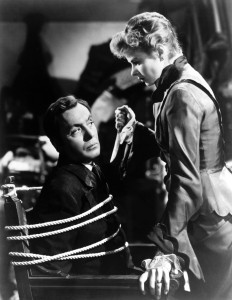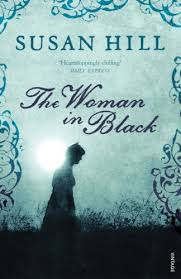Many thanks to Kat for very kindly providing the following summary of our recent discussion in the Melodrama Research Group.
The Book Collector
Where is the architecture?!
Discussion – Monday 17th October
Continuing with the focus on the gothic, but diverging from the cinematic tradition, The Melodrama group decided to read and discuss a modern take on the Gothic tale by reading Alice Thompson’s The Book Collector.
An overview of our discussion clearly pointed towards mixed feelings towards the novel; as much as the group endeavoured to be positive, there was an overall feeling of disappointment, bordering on frustration and annoyance with The Book Collector. The positives that were initially discussed were the chapters when Violet was in the asylum and the transition between the last chapters. It was considered by some of us that the strength of the book could be found in the chapters based in the asylum as this was where the quality of the writing peaked. It was interesting to have been written from Violet’s point of view and the account of being committed to an asylum a vivid portrait. It was commented on that it was refreshing to realise there was no Prince Charming coming to rescue Violet and in so doing, the narrative resisted a more traditional gothic trajectory.
However, it was also noted that the pacing of the narrative was uneven; that the book longed for more ‘twists in the tale’ towards the closing chapters, and there was little for the reader to emotionally engage with. Many in the group found it challenging, if not impossible to emotionally connect, and care for, Violet, which was a troubling aspect for the group. Another point of contention was the lack of focus and description of the house, which is a significant trope of the Gothic. As much as there were extensive descriptions of meal times, which provided an insight into the size and routine of the home, it never substantially compensated for a more gothic rendering of the home. Following on from the lack of focus on the house, the group found it was difficult to place the period the novel was supposedly set in, other than the write up found on the back cover of the book. The time period was not explicit enough, with oddities occurring such as references to ‘calling from the office’. What couldn’t be decided upon at this point in the discussion was whether this was a strategy of the novel, or rather inexperienced and ‘bad writing’.
With the mention of a supposed writing style, the discussion then turned to whether the book was a piece of fan fiction. It was noted that Thompson appeared to take great joy in utilising motifs of the Gothic and that the novel as a whole drew upon, or was reminiscent of, many other sources – the tale of BlueBeard; films such as Gaslight, Rebecca, The Secret Beyond the Door; and literature, Jane Eyre, Northanger Abbey, Yellow Wallpaper, and Frankenstein; as well as the tradition of fairy-tales. The group  noted how the book was to an extent, reminiscent of Angela Carter’s work. However, Thompson’s writing style was problematic on several levels. Firstly, the writing appears to be dispassionate and detached, but the group felt there wasn’t enough evidence to deduce whether or not this was a deliberate act of the writing. Some elements and plot devices were ill-timed and seemingly dispensable, such as Clara’s father, and there were missed opportunities to develop the more interesting ideas, such as the fetish for books, and the tension between the book as physical object and ideas contained within the covers.
noted how the book was to an extent, reminiscent of Angela Carter’s work. However, Thompson’s writing style was problematic on several levels. Firstly, the writing appears to be dispassionate and detached, but the group felt there wasn’t enough evidence to deduce whether or not this was a deliberate act of the writing. Some elements and plot devices were ill-timed and seemingly dispensable, such as Clara’s father, and there were missed opportunities to develop the more interesting ideas, such as the fetish for books, and the tension between the book as physical object and ideas contained within the covers.
Secondly, the novel lacked the intangible “spirit” of a Gothic novel. It was observed by the group that although The Book Collector adhered to all the co-ordinates of a gothic novel by including all the necessary tropes and concerns, it lacked a Gothic tone. In comparison to novels, such as The Woman in Black, this novel did not feel monstrous enough. Structure wise, some chapters were too short leading to an uneven pace. At best it was felt that the novel was heavy handed in places, and drew upon too many other forms and sources. In so doing, the book fell between working as a fairy-tale and working as a gothic novel. In essence, Thompson fundamentally misunderstood how to create a Gothic atmosphere. Whereas Angela Carter created adult focused re-workings of fairy-tales, Thompson appears unsure in what direction she would like her novel to follow. The group thought the novel worked as a first draft, but would have benefitted from further re-workings and a more robust editing process. As it stands the novel does too little to direct the reader to any authorial intent and thus adds to questioning what was the purpose behind writing the novel.
working as a gothic novel. In essence, Thompson fundamentally misunderstood how to create a Gothic atmosphere. Whereas Angela Carter created adult focused re-workings of fairy-tales, Thompson appears unsure in what direction she would like her novel to follow. The group thought the novel worked as a first draft, but would have benefitted from further re-workings and a more robust editing process. As it stands the novel does too little to direct the reader to any authorial intent and thus adds to questioning what was the purpose behind writing the novel.
Many thanks Kat for suggesting the novel, leading the discussion and providing this excellent summary.
As ever, do log in to comment, or email me on sp458@kent.ac.uk to add your thoughts.

